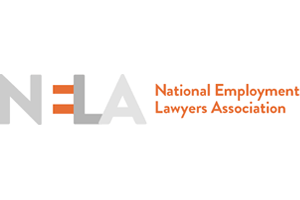of Employees
Mixed Motive Proof Pattern
Proving Discrimination Using the Mixed Motive Proof Pattern

Proving discrimination or retaliation case be challenging. As a result, the courts have developed something called the McDonnell-Douglas determinative factor test, to prove discrimination through inferences. However, in some situations there is another way to prove these claims under New Jersey law.
Specifically, employees who have direct enough evidence of discrimination can use the mixed motive proof pattern. This proof pattern is sometimes referred to as the Price Waterhouse test because it originates from United States Supreme Court Justice Sandra Day O’Connor’s opinion in Price Waterhouse v. Hopkins.
When Does the Mixed Motive Proof Pattern Apply?
The mixed motive proof pattern applies only if there is sufficiently direct evidence of discrimination or retaliation. There at least three different forms of direct evidence.
The first type of direct evidence is when the employer openly admits during the lawsuit that it used an unlawful factor when it made an employment decision, but still claims its decision was lawful. For instance, an employer might reject a job candidate because he has a disability that it believes prevents him from performing the essential functions of his job, even with a reasonable accommodation. Alternatively, an employer might admit it only wanted a man, or only wanted a woman, for a particular job.
The second type of direct evidence is a document or testimony in which a decision-maker admits he or she considered an illegal factor. In other words, it is the proverbial “smoking gun.” For example, this could be an email or other document which shows that someone considered a factor like race, age or gender in making an employment decision. Unlike an admission during a lawsuit, the employer still might dispute that it actually used the illegal factor in making its decision, such as by claiming the document only reflects the opinion of one individual and did not impact the final decision, or argues that the admission is being taken out of context.
The third type of direct evidence is something that directly but more subtly reflects the employer’s discriminatory motive. For example, a statement in which an employer indicates it is seeking to become “more energetic” could directly reflect age discrimination even though it does not mention age. Likewise, a statement by a supervisor that it fired a whistleblower because he was “disloyal” could directly reflect an intention to retaliate. However, employers typically claim they had provide an alternative innocent explanation for these types of statements.
Under New Jersey law, the first two types of direct evidence unquestionably should be enough for the mixed motive proof pattern to apply. In addition, there is some support in case law that the mixed motive pattern also should apply if you only have the third type of direct evidence.
How Does the Mixed Motive Proof Pattern Work?
As in cases under the determinative factor test, in a mixed motive case the employee first has to prove a prima facie case by showing that he or she:
- Belongs to a legally protected category;
- Held, or was qualified for, the job in question;
- Was fired or suffered another adverse employment action; and
- Was replaced by someone who is not a member of the same protected category, or has other circumstances supporting a claim of discrimination or retaliation.
But, if the employee has sufficiently direct evidence of discrimination or retaliation, then the ultimate burden of proof is on the employer, instead of on the employee. Specifically, the employer has to prove it is more likely than not that it would have taken the same adverse action against the employee even if it had not considered the unlawful factor.
Thus, for instance, in a wrongful termination case the employer would have to convince the judge or jury that it would have fired the employee even if it had not considered the employee’s age, gender, race, disability, or other legally-protected trait.
Learn More
Please feel free to call Rabner Baumgart Ben-Asher & Nirenberg, P.C., to discuss your discrimination or retaliation claim, including to help you understand whether you have enough evidence to prove your case. Our telephone number is (201) 777-2250.
For an example of a case involving the mixed motive proof pattern, you might want to read the following article from our New Jersey Employment Law Blog: Employer Must Prove it Did Not Retaliate in Violation of FMLA.
Alternatively, for more information about proving discrimination, we suggest you read our articles: The Power of Direct Evidence of Discrimination and How Do I Prove Employment Discrimination?








